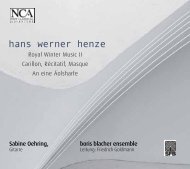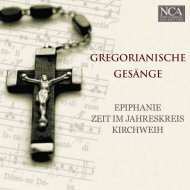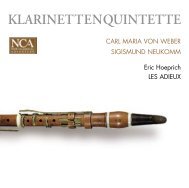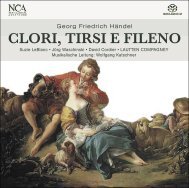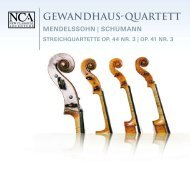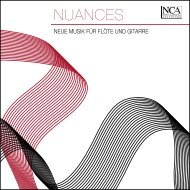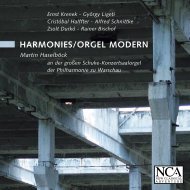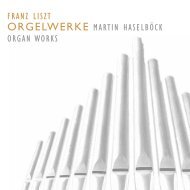georg philipp telemann (1681-1767) - nca - new classical adventure
georg philipp telemann (1681-1767) - nca - new classical adventure
georg philipp telemann (1681-1767) - nca - new classical adventure
Create successful ePaper yourself
Turn your PDF publications into a flip-book with our unique Google optimized e-Paper software.
ending on the dominant. The final movement shifts between doubt and rage, however<br />
concludes in an outbreak of joy so that in the end it triumphs in a ‘lieto fine’ (happy<br />
ending) over all of the previous affects in the sonata.<br />
SOLO IX IS IN B MINOR. In a serene 12/8 it flows forward in eighth and sixteenth notes,<br />
with chromatics and suspensions depicting a character of dejected suffering. Large leaps<br />
invoke inner strife, representing the search for expression as a way to break out of this<br />
sadness. This escape is successful in the second movement Vivace, whose short,<br />
rhythmical and melodically terse figures work more as energetic and extroverted than<br />
virtuoso. The third movement is the hard-fought solution: titled ‘Pomposo’, the<br />
movement strides proudly and optimistically past the listener in a brilliant D major. The<br />
concluding Allegro assai is clearly inspired on Polish folklore, with the opening bars<br />
recalling the idiomatic of the hurdy-gurdy in the bass.<br />
The first two movements of the SOLO X IN E MAJOR return back to pastoral imagery of<br />
the second sonata in E minor. The first movement, titled ‘Soave’, is formally a siciliano in<br />
6/8, using the form as an occasion to sketch in a ‘locus amoenus’, or an idyllic scene:<br />
gently repeating notes and other delicate figures bring forth associations of murmuring<br />
wind, rustling leaves and babbling brooks, all unavoidable accessories of this ‘locus<br />
amoenus.’ Telemann also composes dynamic echo effects into the music, serving the<br />
ideal of ‘Nature’s Echo,’ its idyllic seclusion is made known to man, showing how no one<br />
other than Nature is capable of answering man’s song and music. The second movement<br />
destroys this intimacy, and yet also fits into this pastoral picture: its short, rhythmically<br />
terse motives recall a rustic folk dance. In the third movement, an enchanting and<br />
gallant melody in C-sharp minor, full of fragile ornamentation, Telemann seduces the<br />
listener into the world of the nobility, broken away only by the turbulent and breathless<br />
virtuosity of the running triplets let loose by Telemann in the concluding Spirituoso.<br />
The title ‘Dolente’ in the first movement can be considered to be the theme for the entire<br />
SOLO XI IN A MINOR. In some ways it can be thought that Telemann wanted to<br />
represent this sonata as an example of how to compose funeral music. The slow 3/2<br />
time, the tight melody, mournful suspensions, minor leaps and chromatic motion in both<br />
voices point directly to the entire vocabulary of baroque funeral music. Rage surrounds<br />
the second movement as it switches away from mourning through its aggressive<br />
suspensions and staccati, large leaps and volatile triplets, working as angry, rebellious<br />
and above all audacious. Only in the third movement does inner peace return: a melodic<br />
and free cantabile in C major, playing over a simple bass line, the music is brought back<br />
to an assured and clear serenity. The closing Allegro begins as a dance in a quick 3/8,<br />
elevating itself through the various unconstrained figures that are placed together. These<br />
swarming thirty-second note passages are almost menacing in their overconfidence.<br />
The final sonata of the collection, the SOLO XII IN F-SHARP MINOR, opens solemnly,<br />
almost collapsing upon itself through its broad-gestured attempts to convey sorrow.<br />
Appropriately titled ‘Teneramente’ the movement indeed appears literally bound in its<br />
unsuccessful attempt to break free from itself. Through the use of counterpoint the next<br />
two movements are surprisingly conservative; in the dramatic context of the entire<br />
sonata they are unable to provide any relief to the tension of the opening. The second<br />
movement, Spirituoso, feels strangely wooden and strained and the third movement, a<br />
Gratioso, attempts to develop a dialogue between the melody and the bass. However,<br />
this dialogue in the third movement is so hidden behind a mask that, although charming,<br />
it remains neutral and emotionally restrained. Only in the concluding Allegro is any<br />
attempt to speak directly to the listener successful. Formally titled as a ‘Gavotte en<br />
Rondeau,’ the music is built upon a symmetrical eight-bar melody over a bass line of<br />
running eighth notes. The solo line of the first couplet is so highly virtuosic that the bass<br />
is forced to hold back. There is a repetition of the opening theme, with the second<br />
couplet following, and back again to the theme in the form of a true rondeau.<br />
26 27



